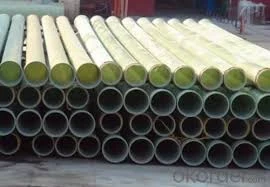
-
 Afrikaans
Afrikaans -
 Albanian
Albanian -
 Amharic
Amharic -
 Arabic
Arabic -
 Armenian
Armenian -
 Azerbaijani
Azerbaijani -
 Basque
Basque -
 Belarusian
Belarusian -
 Bengali
Bengali -
 Bosnian
Bosnian -
 Bulgarian
Bulgarian -
 Catalan
Catalan -
 Cebuano
Cebuano -
 China
China -
 China (Taiwan)
China (Taiwan) -
 Corsican
Corsican -
 Croatian
Croatian -
 Czech
Czech -
 Danish
Danish -
 Dutch
Dutch -
 English
English -
 Esperanto
Esperanto -
 Estonian
Estonian -
 Finnish
Finnish -
 French
French -
 Frisian
Frisian -
 Galician
Galician -
 Georgian
Georgian -
 German
German -
 Greek
Greek -
 Gujarati
Gujarati -
 Haitian Creole
Haitian Creole -
 hausa
hausa -
 hawaiian
hawaiian -
 Hebrew
Hebrew -
 Hindi
Hindi -
 Miao
Miao -
 Hungarian
Hungarian -
 Icelandic
Icelandic -
 igbo
igbo -
 Indonesian
Indonesian -
 irish
irish -
 Italian
Italian -
 Japanese
Japanese -
 Javanese
Javanese -
 Kannada
Kannada -
 kazakh
kazakh -
 Khmer
Khmer -
 Rwandese
Rwandese -
 Korean
Korean -
 Kurdish
Kurdish -
 Kyrgyz
Kyrgyz -
 Lao
Lao -
 Latin
Latin -
 Latvian
Latvian -
 Lithuanian
Lithuanian -
 Luxembourgish
Luxembourgish -
 Macedonian
Macedonian -
 Malgashi
Malgashi -
 Malay
Malay -
 Malayalam
Malayalam -
 Maltese
Maltese -
 Maori
Maori -
 Marathi
Marathi -
 Mongolian
Mongolian -
 Myanmar
Myanmar -
 Nepali
Nepali -
 Norwegian
Norwegian -
 Norwegian
Norwegian -
 Occitan
Occitan -
 Pashto
Pashto -
 Persian
Persian -
 Polish
Polish -
 Portuguese
Portuguese -
 Punjabi
Punjabi -
 Romanian
Romanian -
 Russian
Russian -
 Samoan
Samoan -
 Scottish Gaelic
Scottish Gaelic -
 Serbian
Serbian -
 Sesotho
Sesotho -
 Shona
Shona -
 Sindhi
Sindhi -
 Sinhala
Sinhala -
 Slovak
Slovak -
 Slovenian
Slovenian -
 Somali
Somali -
 Spanish
Spanish -
 Sundanese
Sundanese -
 Swahili
Swahili -
 Swedish
Swedish -
 Tagalog
Tagalog -
 Tajik
Tajik -
 Tamil
Tamil -
 Tatar
Tatar -
 Telugu
Telugu -
 Thai
Thai -
 Turkish
Turkish -
 Turkmen
Turkmen -
 Ukrainian
Ukrainian -
 Urdu
Urdu -
 Uighur
Uighur -
 Uzbek
Uzbek -
 Vietnamese
Vietnamese -
 Welsh
Welsh -
 Bantu
Bantu -
 Yiddish
Yiddish -
 Yoruba
Yoruba -
 Zulu
Zulu
acid storage tank
Understanding Acid Storage Tanks Importance, Design, and Safety
Acid storage tanks play a crucial role in various industries, including chemical manufacturing, pharmaceuticals, and waste treatment. These tanks are specifically designed to safely store corrosive substances, particularly acids, which can pose significant risks if not handled properly. Understanding the importance, design considerations, and safety protocols surrounding acid storage tanks is essential for ensuring operational efficiency and environmental protection.
Importance of Acid Storage Tanks
The need for acid storage tanks arises from the requirement to store large volumes of chemicals safely. Industries often utilize strong acids, such as sulfuric acid, hydrochloric acid, and nitric acid, which are critical to their processes. These tanks provide a secure environment to store these hazardous materials, minimizing the risk of leaks or spills that could lead to environmental contamination or pose health hazards to workers.
In addition to safety, acid storage tanks are essential for maintaining a consistent supply of acids for production processes. Efficient storage and handling systems can help streamline operations, reduce costs, and improve productivity by ensuring that the necessary materials are readily available when needed.
Design Considerations
The design of an acid storage tank involves multiple factors that must be carefully considered to ensure its effectiveness and safety. Material selection is paramount; tanks must be constructed from corrosion-resistant materials, such as fiberglass, polyethylene, or certain alloys, to withstand the aggressive nature of the stored acids. The choice of material not only affects the tank's longevity but also its maintenance and replacement costs.
acid storage tank

Additionally, the tank's size is determined by the volume of acid required for the specific application. Proper sizing allows for efficient storage while also considering factors such as expansion, temperature changes, and the physical properties of the acid being stored.
Ventilation and containment systems are also critical components of acid storage tank design. Adequate ventilation is necessary to prevent the buildup of hazardous fumes, while secondary containment systems help mitigate the risk of leaks or spills, protecting the surrounding environment and enhancing safety.
Safety Protocols
Ensuring the safe operation of acid storage tanks requires stringent safety protocols. Regular inspections and maintenance are essential to identify and rectify any potential issues before they escalate. Training staff on proper handling and emergency response procedures is critical, as human error can often contribute to accidents.
Moreover, implementing monitoring systems that can detect leaks or changes in pressure or temperature can provide early warnings, allowing for prompt action to prevent catastrophic failures. Emergency response plans, including spill containment and evacuation procedures, must be regularly reviewed and practiced to ensure preparedness in case of an incident.
Conclusion
In summary, acid storage tanks are a vital component in industries that handle corrosive substances. Their design and maintenance are crucial for safety, environmental protection, and operational efficiency. By understanding the role, design considerations, and safety protocols associated with acid storage tanks, industries can better mitigate risks and safeguard both their workers and the environment. As regulations and technologies evolve, continuous improvement in tank design and management practices will remain a priority for responsible chemical handling.









